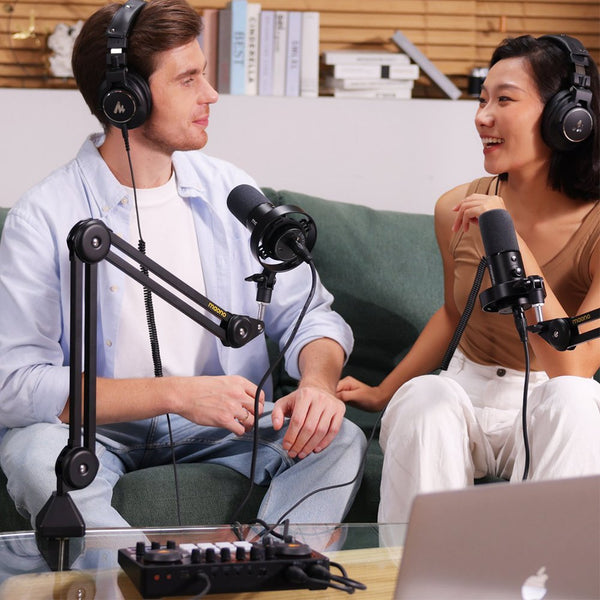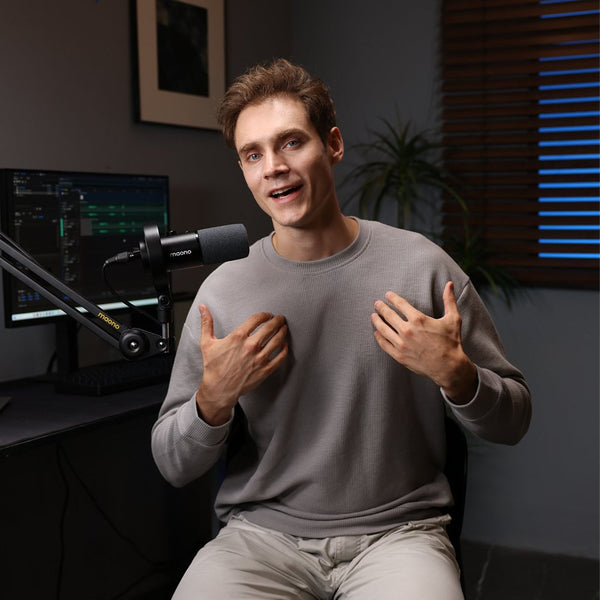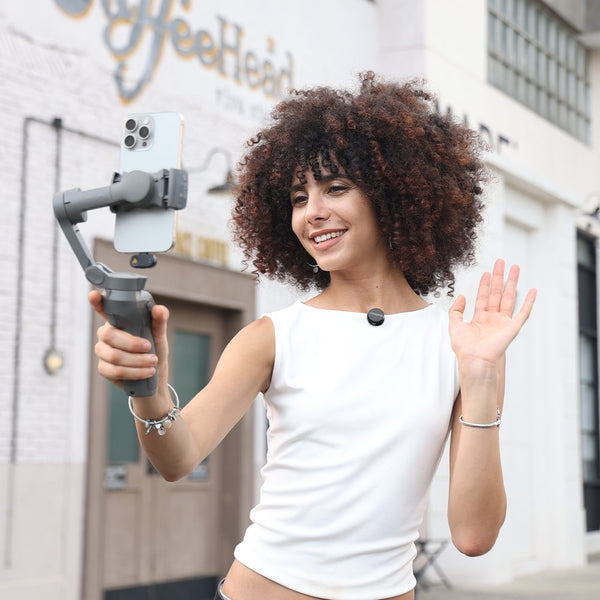As a beginner in baking, I’m always fascinated by the science behind it and continue to be amazed by its magic even now. It makes me wonder how baking cookies differs from making cupcakes, and how they turn out so differently despite having almost similar-looking batters. Let’s find out.
Cookies and cupcakes are two of the most beloved baked treats across the globe. While they share some basic ingredients—flour, sugar, eggs, and butter—the way these ingredients are combined and baked creates vastly different textures, flavors, and presentations. Cookies tend to be chewy or crisp, while cupcakes are light, fluffy, and often topped with frosting.
For food enthusiasts, understanding the science behind these differences not only improves baking skills but also enhances the way you share recipes. With the rise of baking vlogs, many home bakers are turning to YouTube, TikTok, or Instagram to showcase their creations. But while your audience can see your beautifully baked goods, they also need to hear you clearly. That’s where top rated wireless microphones come in. Crisp, clear audio makes your baking instructions easier to follow and gives your vlog a professional polish.
In this article, we’ll dive into the key differences between baking cookies and cupcakes, common mistakes to avoid, and why using a wireless microphone is crucial for creating engaging baking vlogs.

How Baking Methods Change the Texture of Cookies vs Cupcakes
The primary difference lies in baking methods. Cookies are baked as individual portions with minimal rise. Their dough is typically thicker, with higher fat-to-flour ratios, resulting in denser textures. Cupcakes, on the other hand, rely on creaming butter and sugar to trap air, producing a lighter, cake-like crumb.
The tray also makes a difference: cookies are baked on flat sheets where the dough spreads, while cupcakes are contained in liners or molds, forcing them to rise upward.
The Role of Mixing Techniques in Cookies vs Cupcakes
Mixing techniques dramatically impact texture. For cookies, overmixing the dough can lead to tough, dense cookies because too much gluten develops. For cupcakes, however, thorough mixing—especially in the creaming stage—creates volume and fluffiness.
Cupcakes often require a gentler touch after flour is added, to prevent overworking the batter. Cookies benefit from chilling the dough, which solidifies fats and reduces spreading during baking.
Oven Temperature and Timing: Cookies vs Cupcakes
Oven temperature is critical for both treats. Cookies are usually baked at higher temperatures (350–375°F) for shorter periods to achieve crisp edges and chewy centers. Cupcakes require more moderate heat (325–350°F) for even rising and a soft crumb.
Timing differences are also notable: cookies often bake in 8–12 minutes, while cupcakes need 15–20 minutes. Pulling cookies out early maintains chewiness, while cupcakes need enough time to set fully in the center.
Frosting and Decoration: Why Cupcakes Differ From Cookies
Cupcakes are typically associated with elaborate frosting and decoration. Buttercream, cream cheese frosting, and whipped toppings turn cupcakes into showpieces for parties and celebrations. Cookies, while occasionally decorated with icing or chocolate drizzle, are more often enjoyed plain or with mix-ins like chocolate chips or nuts.
This distinction makes cupcakes more visually appealing in vlogs, but cookies tend to highlight technique—such as achieving the perfect chewy texture.
Common Mistakes When Baking Cookies vs Cupcakes
Cookies:
-
Using warm butter instead of chilled butter, causing excessive spreading.
-
Overbaking, which results in hard, dry cookies.
-
Not chilling dough, leading to inconsistent textures.
Cupcakes:
-
Overfilling liners, which causes overflow.
-
Opening the oven door too early, making cupcakes sink.
-
Overmixing, which produces dense cakes instead of fluffy ones.
Choosing the Right Equipment for Baking Each Treat
The tools you choose can make or break your results. For cookies, essentials include flat baking sheets, parchment paper, and a cooling rack. For cupcakes, muffin tins, paper liners, and piping bags for frosting are must-haves.
In vlogging, using visually appealing tools—like silicone spatulas or glass bowls—can enhance your viewers’ experience. High-quality lighting paired with clear audio ensures your tutorial stands out. And whether you record on a wireless microphone for PC, a Lavalier microphone for iPhone wireless, or a wireless microphone for Android phone, the right gear ensures professional audio.
How to Film a Baking Vlog: Capturing the Cookie vs Cupcake Process
When filming, set up your camera to capture both wide shots of your workspace and close-ups of mixing, scooping, and frosting. Use natural light or soft studio lighting for a warm, inviting look.
Narrating your process makes your video more engaging, but this is only effective if your audio is crisp. That’s why investing in a good wireless system microphone is just as important as having the right baking equipment.
Why a Wireless Mic is Essential for Baking Vloggers
Baking vlogs often involve movement—walking between the counter, oven, and sink. A wireless mic frees you from being tethered to your camera. Unlike built-in camera microphones, which capture background noise and echo, wireless mics focus on your voice, ensuring clear instructions.
Additionally, kitchens are noisy environments. From whirring mixers to timers beeping, background noise can overwhelm your voice. Wireless lavalier mics are designed to minimize this interference, creating professional-level sound quality.
FAQ Section
1. What are the main ingredient differences between cookies and cupcakes?
Cookies usually have more fat and less liquid, while cupcakes have more eggs and milk to create a softer crumb.
2. Why do cookies usually turn out chewy or crispy while cupcakes are soft and fluffy?
It’s due to fat ratios, mixing techniques, and baking time. Cupcakes rely on aeration, while cookies are denser.
3. How does the mixing method affect the final texture of cookies vs cupcakes?
Overmixing cookie dough creates toughness, while cupcakes require proper creaming to achieve fluffiness.
4. Do I need different types of flour for baking cookies and cupcakes?
Not necessarily, but all-purpose flour works best for cookies, while cupcakes benefit from cake flour for tenderness.
5. Why is oven temperature so important when comparing cookies to cupcakes?
Cookies bake hotter and faster for crispness; cupcakes need even, moderate heat for rising.
6. Can the same batter be used to make both cookies and cupcakes?
Not usually. Each recipe is formulated for its specific texture.
7. What are the most common mistakes people make when baking cookies?
Overbaking, not chilling dough, and incorrect butter temperature.
8. What are the most common mistakes people make when baking cupcakes?
Overmixing, underbaking, or opening the oven door too soon.
9. How do toppings and frostings differ between cupcakes and cookies?
Cupcakes are often frosted; cookies are decorated more simply or enjoyed plain.
10. Which is easier for beginners to bake: cookies or cupcakes?
Cookies are generally easier since they require less precision.
11. Would a recipe for cookies also be used to make a cupcake?
No—ratios, techniques, and textures are too different.
12. Why do baking vloggers need a wireless mic instead of using their camera’s built-in mic?
Built-in mics capture echo and noise, while wireless mics isolate the voice.
13. How does a wireless mic improve sound quality in a kitchen setting?
It reduces background noise from mixers, ovens, and other appliances.
14. Which type of wireless mic is best for filming baking tutorials at home?
Wireless lavalier mics are compact, hands-free, and ideal for kitchen vlogs.
15. Can a wireless lavalier mic handle background kitchen noise like mixers and ovens?
Yes, they are designed to focus on your voice while minimizing other sounds.
16. What’s the difference between using a wireless mic vs a shotgun mic in baking vlogs?
Shotgun mics capture directional sound but limit movement. Wireless lav mics allow freedom to move.
17. How can I position my wireless mic to capture my voice clearly while baking?
Clip it near your chest, about 6–8 inches from your mouth.
18. Do I need extra audio gear besides a wireless mic for baking vlogs?
Not always, but audio interfaces or recorders can boost quality.
19. How far can I move around my kitchen without losing audio with a wireless mic?
Most wireless systems allow 30–100 feet of range.
20. What are the most affordable wireless mic options for beginner baking vloggers?
-
Maono Wave T5 Wireless Microphone – The Maono Wave T5 is compact, reliable, great for mobility.

-
Maono Wave T1 Mini Wireless Microphone – Maono Wave T1 Mini is budget-friendly, ideal for small kitchens.

21. How do I sync wireless mic audio with my baking video footage?
Most editing software allows easy syncing. Clapping at the start of filming also helps align audio and video.
Conclusion
Cookies and cupcakes may share similar ingredients, but their textures, baking methods, and decorations make them unique. Cookies delight with their chewy or crispy bite, while cupcakes shine as soft, frosted treats. Understanding these differences helps bakers improve their craft and avoid common pitfalls.
For baking vloggers, however, great visuals are only half the story. Clear, professional-quality audio is just as essential for keeping viewers engaged. Investing in top rated wireless microphones, such as the Maono Wave T5 or Wave T1 Mini, ensures your instructions are heard loud and clear, no matter how busy your kitchen gets. Whether you’re recording with a wireless microphone for PC, using a Lavalier microphone for iPhone wireless, or trying a wireless microphone for Android phone, the right setup helps you deliver content that looks and sounds polished.
Combining solid baking knowledge with the right vlogging tools can help you create content that’s not only educational but also enjoyable—helping you stand out in the ever-growing world of baking tutorials.
Related Article:
Muffins vs. Cupcakes & Wireless Mics: Baking Guide Explained



